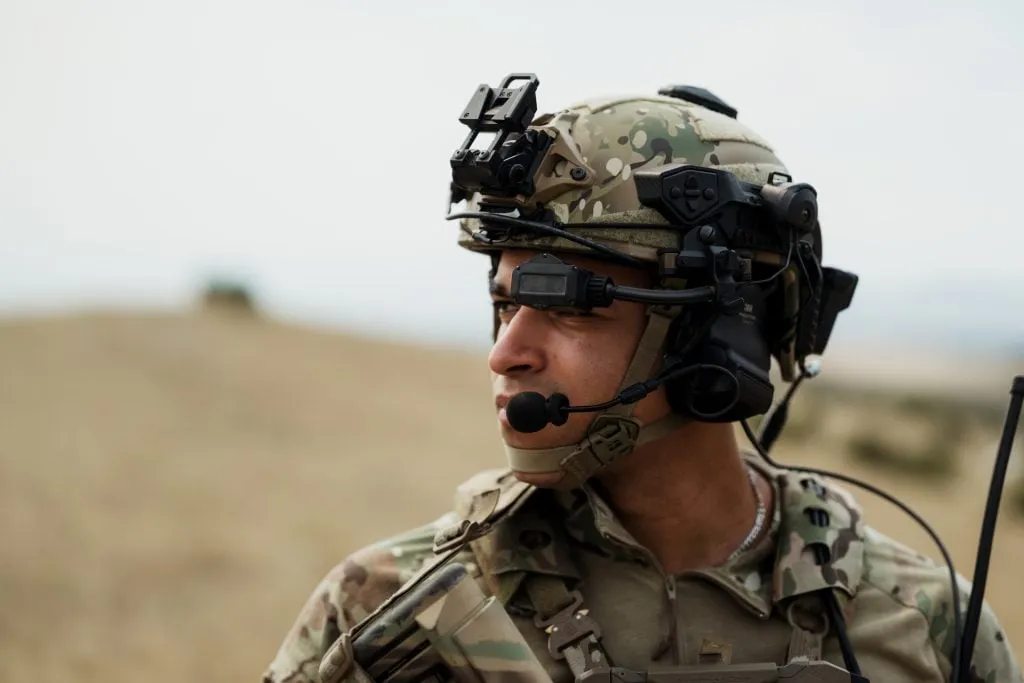Galvion’s CORTEX helmet system marks a pivotal shift in soldier-worn technology, transforming traditional protective gear into intelligent, data-driven platforms. The company’s latest advancements, unveiled at the Association of the United States Army (AUSA) exposition, underscore a strategic pivot toward integrating advanced electronics into combat helmets—a move that could redefine battlefield situational awareness and lethality.
At the core of Galvion’s innovation is the CORTEX Echo, a modular bolt-on system designed to retrofit existing helmets with cutting-edge connectivity and visualization capabilities. Unlike traditional helmets, which focus solely on protection, the CORTEX platform introduces a new layer of functionality by embedding electronics directly into the helmet structure. This integration allows soldiers to access critical data—such as maps, alerts, and sensor information—without diverting their attention from the battlefield.
“CORTEX is intended to make your helmet smarter and to bring some electronics and visualization capability to the helmet platform itself,” a Galvion representative explained. “So going beyond the protective nature of a helmet—which is, of course, essential—now we’re looking at how to bring data and visualized information into it to either enhance lethality for the individual warfighter or improve protectiveness, in the sense of understanding where your threats are.”
The CORTEX Echo system leverages the Android Team Awareness Kit (ATAK), a widely adopted tactical mapping and situational awareness application used by U.S. and allied forces. By connecting to an ATAK-enabled device, the helmet routes data through its rail system to a Visual Augmentation System (VAS) connector, projecting critical information directly into the soldier’s line of sight. This eliminates the need for chest-mounted displays, a longstanding issue that forces operators to look down and momentarily lose situational awareness—a critical vulnerability in combat environments.
“And that’s not a very wise thing to do when you’re in a threat environment, right?” the Galvion representative said. “So the idea is by getting this information displayed in a convenient way near your eye, you can get your head out of your ATAK and you can keep your situational awareness out towards the threat area.”
Galvion’s approach stands out in two key ways. First, the company has adopted an open architecture philosophy, rejecting proprietary display systems that limit compatibility. Unlike competitors that lock users into a single ecosystem, the CORTEX Echo is designed to work with virtually any heads-up display technology, offering unparalleled flexibility. Second, the system features an intuitive user interface, with an Alert Center application that requires minimal training to operate—comparable to a smartphone.
Looking ahead, Galvion previewed the CORTEX Evo, a fully integrated helmet-electronics system that eliminates the need for bolt-on components. The prototype envisions a future where the helmet itself serves as the computing platform, reducing weight and streamlining the form factor. “This is really a concept that we’re showing here, with this idea of how far we can push things to where there is really no difference between the helmet and the electronics that are supporting these types of missions and this type of data aggregation,” the representative explained.
The implications of Galvion’s advancements extend beyond individual soldier performance. By enhancing situational awareness and reducing cognitive load, the CORTEX system could significantly improve unit cohesion and operational efficiency. As militaries worldwide increasingly prioritize data-driven warfare, Galvion’s open architecture approach may set a new standard for interoperability and innovation in soldier-worn technology.
The CORTEX platform also raises important questions about the future of battlefield technology. As helmets evolve into multifunctional hubs, will soldiers become more reliant on digital augmentation, or will this shift introduce new vulnerabilities? How will militaries balance the need for advanced capabilities with the imperative of protecting soldiers from cyber threats? These challenges will shape the next generation of defence technology, and Galvion’s CORTEX system is at the forefront of this evolution.

